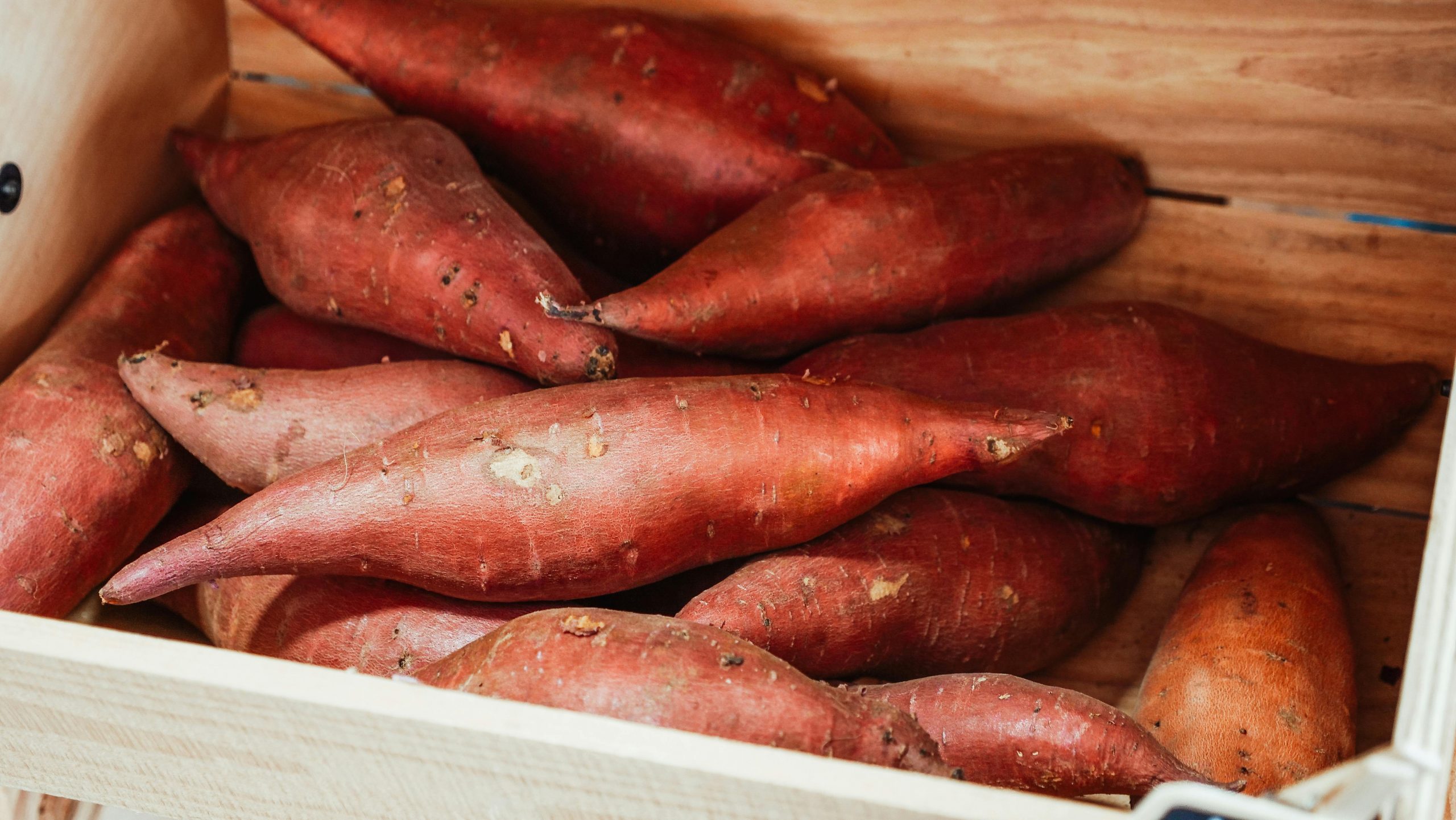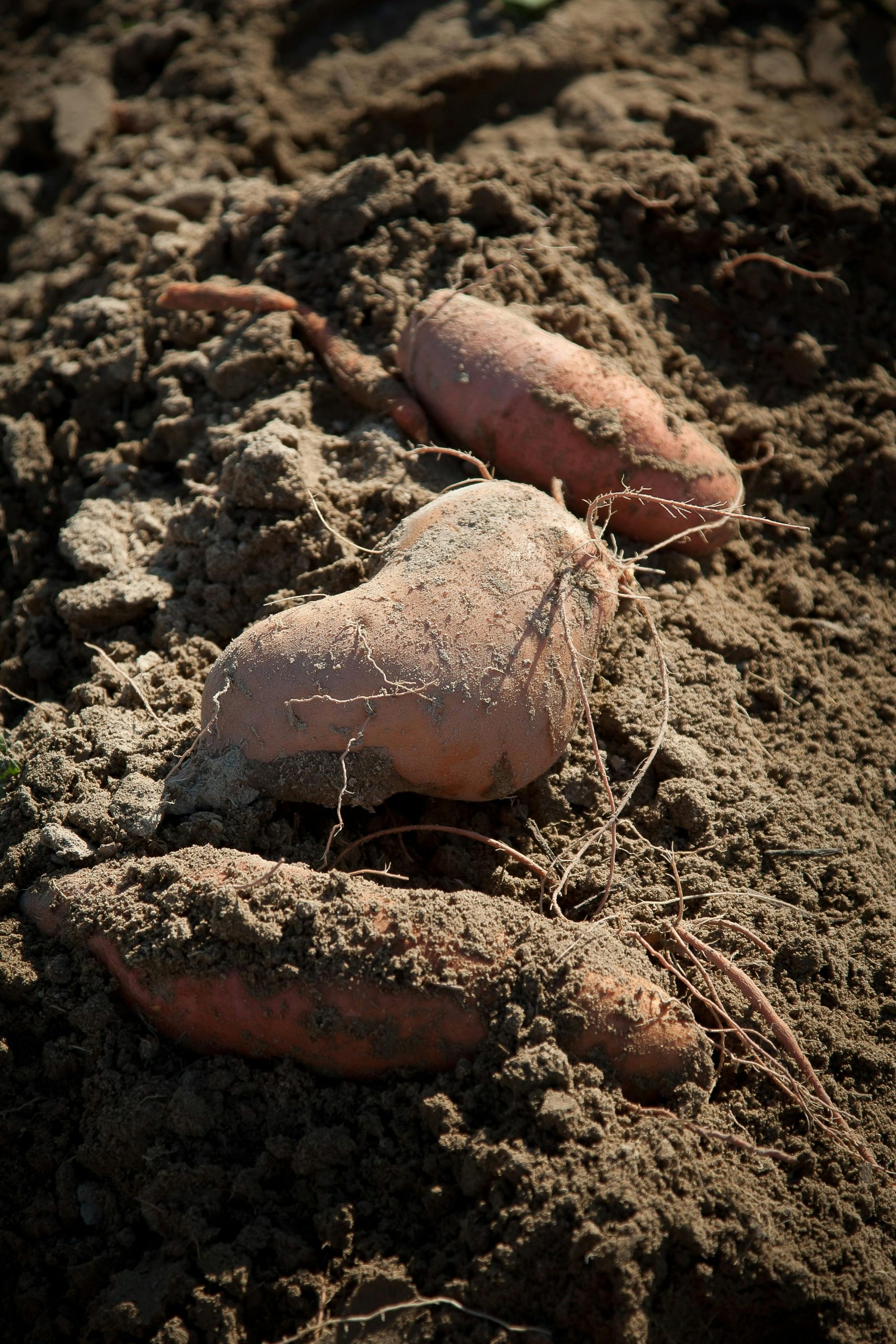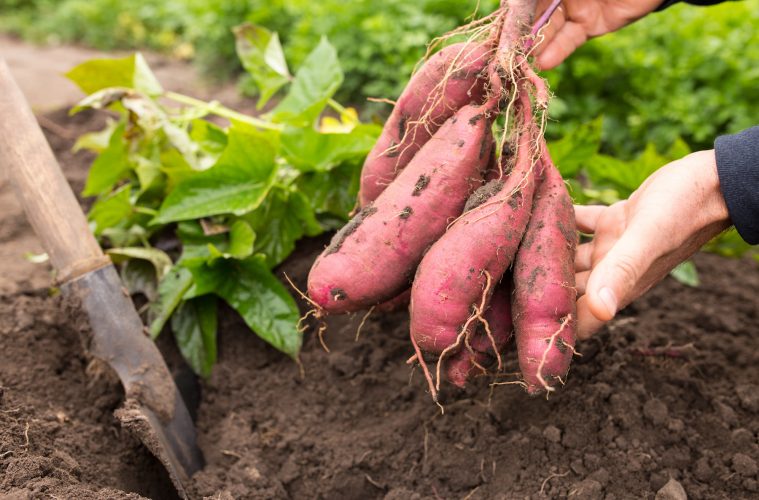Sweet potatoes, known for their robust growth and delicious tubers, thrive in diverse climates!
Whether you’re in the coastal regions with their mild winters or the warmer, drier inland areas, cultivating these nutrient-rich vegetables can be a rewarding experience.
Here’s how to successfully grow sweet potatoes in your garden:
Choosing varieties
While traditionally requiring a long, warm season to mature, newer varieties now make it feasible to grow sweet potatoes even in regions with shorter growing seasons. Opt for varieties suited to your local climate and space constraints. Bush varieties are ideal for smaller gardens, while traditional sprawling types flourish in more expansive plots.
Ideal growing conditions
Sweet potatoes demand full sun to thrive, making a sunny spot in your garden essential. Ensure the soil is well-drained to prevent rot—consider raised beds or large containers if your soil is rocky or poorly drained.
Planting sweet potatoes
Wait until all danger of frost has passed and the soil temperature reaches around 18°C before planting. Space slips (young shoots) 30-45 cm apart in rows 90-120 cm apart. In cooler regions, use black plastic mulch to warm the soil and accelerate growth. Protect young plants from unexpected cold snaps with row covers or plastic pots.

Pexels
Caring for your crop
Sunlight: Sweet potatoes thrive on at least six hours of direct sunlight daily.
Soil and water: Aim for well-drained soil with a pH of 5.8 to 6.2. Enrich with organic matter to improve drainage and nutrition. Water consistently, ensuring around 25 mm per week during the growing season.
Temperature and humidity: Sweet potatoes love warmth—temperatures between 18-35°C are optimal. They tolerate both high and average humidity levels.
Fertilisation: Before planting, enrich the soil with compost or slow-release organic fertilizer. Avoid excessive nitrogen, which encourages foliage growth over tuber development.

Pexels
Managing pests and diseases
Depending on where you live, watch out for wild animals and pets, which may browse on sweet potato leaves. Use fencing or netting to protect your plants. Monitor for pests like golden tortoise beetles and caterpillars, as well as underground threats like wireworms and root-knot nematodes. Rotate crops annually to prevent soil-borne diseases.
Harvesting and storage
Harvest sweet potatoes in autumn before the first frost. Gently lift tubers using a fork, being careful not to damage them. Cure harvested sweet potatoes by storing them in a warm, humid environment (27-32°C) for about a week to enhance flavour and heal minor cuts. Store cured sweet potatoes in a cool (10-15°C), dark place with good ventilation for several months.
ALSO SEE: HOW TO GROW POTATOES IN CONTAINERS
Feature image: Pexels

